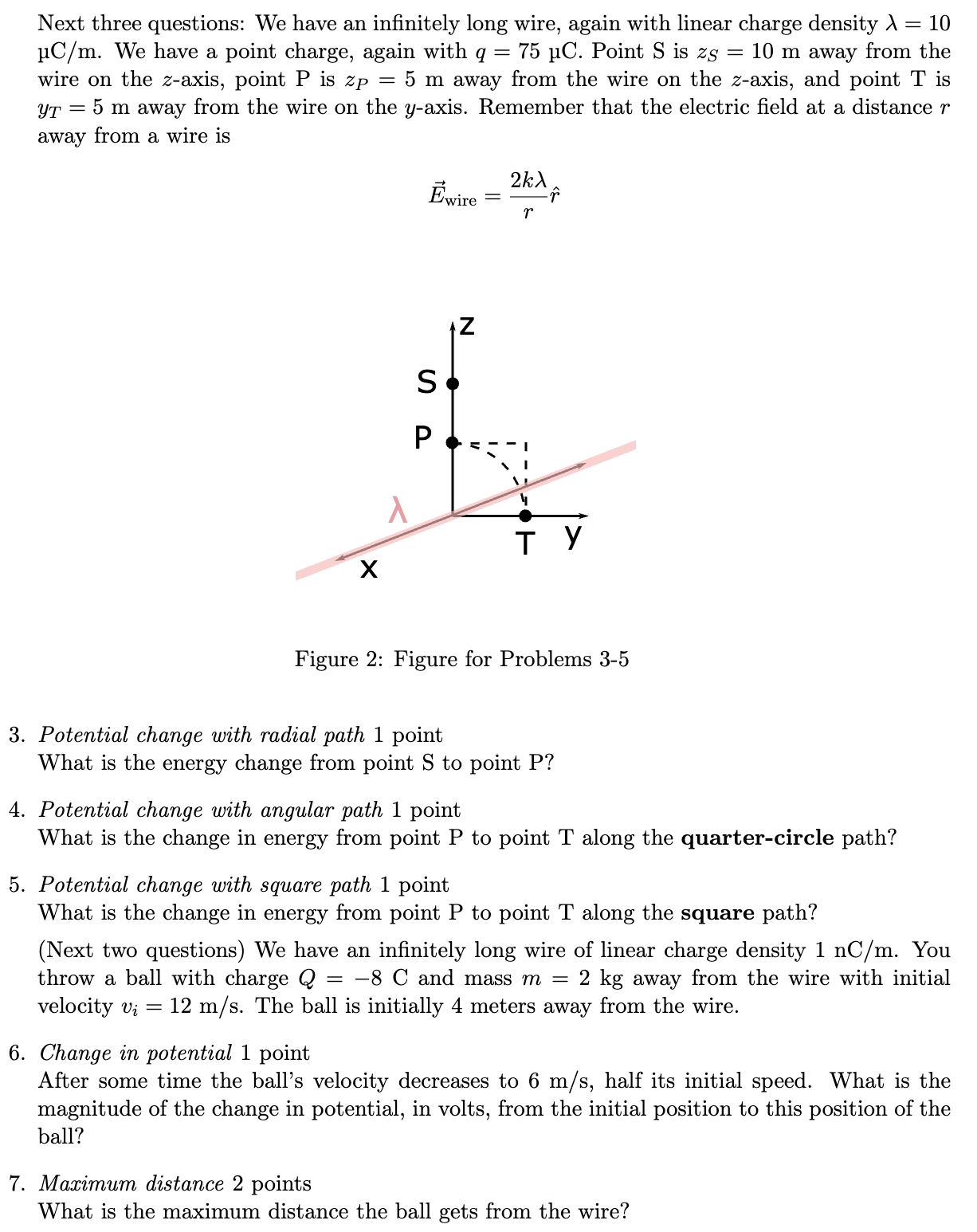We have an infinitely long wire, again with linear charge density λ = 10 μC/m. We have a point charge, again with q = 75 μC. Point S is zS = 10 m away from the wire on the z-axis, point P is zP = 5 m away from the wire on the z-axis, and point T is yT = 5 m away from the wire on the y-axis. Remember that the electric field at a distance r away from a wire is E→wire = 2 kλrr^ Figure 2: Figure for Problems 3-5 3. Potential change with radial path 1 point What is the energy change from point S to point P ? 4. Potential change with angular path 1 point What is the change in energy from point P to point T along the quarter-circle path? 5. Potential change with square path 1 point What is the change in energy from point P to point T along the square path? (Next two questions) We have an infinitely long wire of linear charge density 1 nC/m. You throw a ball with charge Q = −8 C and mass m = 2 kg away from the wire with initial velocity vi = 12 m/s. The ball is initially 4 meters away from the wire. 6. Change in potential 1 point After some time the ball's velocity decreases to 6 m/s, half its initial speed. What is the magnitude of the change in potential, in volts, from the initial position to this position of the ball? 7. Maximum distance 2 points What is the maximum distance the ball gets from the wire?
